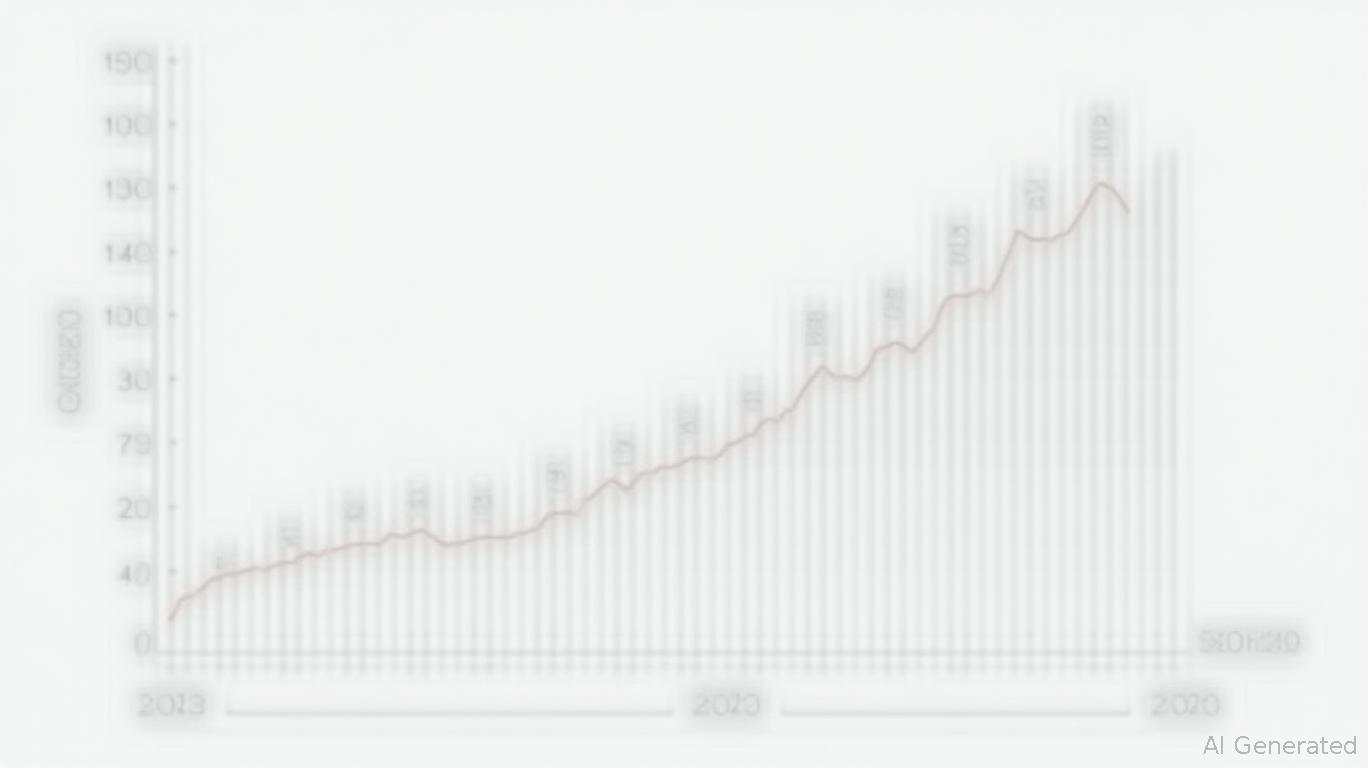HYTR: Navigating Volatility with Discipline and Dividends
In today's markets, where geopolitical tensions, shifting央行政策, and economic uncertainty dominate headlines, investors seek strategies that balance yield with resilience. Enter the CounterPoint High Yield Trend ETF (HYTR), an actively managed ETF designed to navigate volatile environments while delivering consistent monthly distributions. HYTR's blend of tactical high yield exposure and dynamic risk management makes it a compelling option for income-focused investors willing to embrace disciplined volatility mitigation.
The Strategy: Momentum-Driven Allocation in a High-Yield Framework
HYTR's core approach hinges on a rules-based system that combines 202 weighted signals—101 moving average signals and 101 time-series momentum signals—to dynamically allocate between high yield corporate bonds and short-duration U.S. Treasuries. This ensemble of signals generates a blended score that dictates three core positions:
- Risk-On Mode (100% High Yield): When the score exceeds 90%, signaling strong momentum in high yield markets.
- Blended Mode (80/20 to 20/80 allocations): For scores between 10% and 90%, balancing income potential with Treasury ballast.
- Risk-Off Mode (100% Treasuries or T-bills): Triggered if the score drops below , or if Treasury holdings experience a 3% drawdown over five days.
This framework allows HYTR to pivot swiftly during market stress. For instance, during the 2022 rate-hike cycle, HYTR's Treasury allocations likely cushioned losses, while its high yield exposure benefited from widening credit spreads. As of August 2024, HYTR's year-to-date return of 5.25% (market price) outperformed the Bloomberg U.S. Corporate High Yield Bond Index's 3.8% return, demonstrating the strategy's efficacy in volatile environments.
Risk Management: Stopping Losses Before They Start
HYTR's stop-loss mechanisms are a critical differentiator. The 3% Treasury drawdown trigger and five-day score threshold ensure the fund avoids prolonged exposure to deteriorating conditions. This contrasts with passive high yield ETFs, which remain fully invested regardless of market sentiment.
The fund's reliance on Treasuries in Risk-Off mode also mitigates interest rate risk. Short-duration Treasury ETFs (e.g., SHY or BIL) reduce sensitivity to rising rates, a key concern in today's environment.
However, investors should note HYTR's inherent risks. Its focus on high yield bonds exposes it to default risk, while the expense ratio of 0.97% (capped at 0.60% through April 2023) may rise if the adviser's fee waiver expires. Additionally, HYTR's monthly distributions are not guaranteed and depend on income generation—something to monitor closely during periods of market stress.

Yield Stability: A Monthly Dividend Machine
HYTR's claim to fame is its consistent monthly dividends. As of June 2025, distributions have remained relatively stable, with recent payouts averaging $0.10 per share. The trailing 12-month yield of 4.62% offers a meaningful income stream, especially compared to the 1.7% yield of the S&P 500.
Key distribution trends:
- Q1 2025: February's $0.0963 and March's $0.102 reflect a gradual increase.
- Q2 2025: April's $0.102 and June's $0.1043 suggest a trend toward stabilization.
- Volatility in 2024: A dip to $0.036 in December 2024 highlights the strategy's sensitivity to market conditions, but payouts rebounded quickly.
The fund's dividend policy relies on income from high yield bonds and short-term capital gains, with no payout ratio (indicating dividends are not drawn from principal). This
aligns with HYTR's role as an income generator, though investors should remain cautious of potential cuts during prolonged market downturns.The Investment Case: When Does HYTR Shine?
HYTR excels in three scenarios:
1. Growth with Volatility: In markets where equity gains are uneven, HYTR's Treasury allocations can reduce portfolio swings while still benefiting from high yield income.
2. Rate-Hike Cycles: Short-duration Treasuries insulate against rising rates, while high yield bonds often perform well when credit spreads widen.
3. Income Seekers with a Risk Tolerance: Investors targeting yields above traditional bonds but unwilling to fully commit to high yield's inherent risks can use HYTR as a middle ground.
Caveats and Considerations
- Expense Ratio: Monitor the adviser's fee waiver expiration, as a rise to 0.97% could erode returns.
- Liquidity: HYTR's liquidity depends on secondary market trading volumes. While its holdings (USHY, JNK, HYG) are liquid, the fund itself may experience premiums or discounts to NAV.
- Policy Risks: Geopolitical or regulatory shifts (e.g., trade wars, tax changes) could disrupt high yield sectors disproportionately.
Final Thoughts: A Tool for the Disciplined Income Investor
HYTR is not a “set it and forget it” investment. Its value lies in its ability to adapt to changing market conditions while maintaining a dividend discipline. For portfolios needing both income and volatility management, HYTR can serve as a tactical satellite holding—particularly when paired with core allocations to Treasuries or low-volatility equities.
Investors should treat HYTR as a complement to, not a replacement for, a diversified bond portfolio. Keep allocations moderate (e.g., 5–10% of fixed income exposure), and rebalance if the fund's expense ratio rises or distributions falter. In a world where yield is scarce and volatility is abundant, HYTR offers a pragmatic solution—but only for those willing to engage actively with its nuances.

Comments
No comments yet